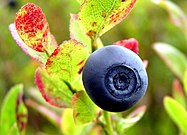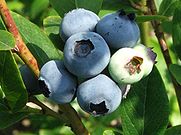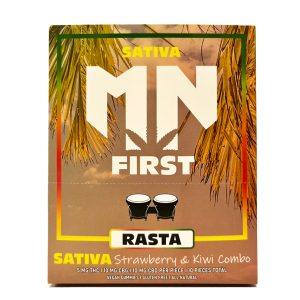**Botanical and Culinary Aspects of Berries:**
– Berries are fleshy fruits from the ovary of a single flower, with seeds and flesh.
– Culinary berries are small, juicy, colorful, sweet or sour, and lack pits.
– Examples of common culinary berries include strawberries, raspberries, blueberries, and blackberries.
– Berries are used in jams, preserves, cakes, and pies globally.
– Some berries like deadly nightshade and pokeweed are poisonous.
**Commercial Importance and Cultivation of Berries:**
– Berries are commercially significant and used in various products worldwide.
– Different types of berries are cultivated, with some like raspberries and strawberries being selectively bred.
– Berries require specific temperatures for dormancy and ideal soil conditions for cultivation.
– Organic cultivation methods and postharvest storage practices are essential for berry crops.
– In 2005, 1.8 million acres were cultivated with 6.3 million short tons of berries produced globally.
**Breeding and Genetic Advancements in Berries:**
– Traditional and modern breeding techniques aim to improve berry size, yield, flavor, and disease resistance.
– Antoine Nicolas Duchesne made breeding discoveries in the 18th century.
– Molecular biology and genetic engineering advancements are used in berry breeding.
– Genetic modification techniques are employed to enhance berry traits.
– Goals of breeding include enhancing berry quality and productivity.
**Culinary Usage and Beverages Featuring Berries:**
– Berries like cranberry, blueberry, raspberry, and strawberry are commonly used in beverages.
– Berry wines and fruit wines from elderberry, strawberry, blueberry, and others are popular.
– Berries are used in beer styles like framboise and fruit lambics.
– Dried berries like currants, raisins, and sultanas are widely used in cooking and snacking.
– Berries are preserved through drying, freezing, pickling, and making fruit preserves.
**Health Benefits, Cultural Significance, and Research on Berries:**
– Berry consumption is studied for potential health benefits like lowering BMI and blood pressure.
– Berries are rich in antioxidants, vitamins, and polyphenolics.
– Berries have cultural significance in art, clothing, and rituals.
– Research explores the health benefits of different berry varieties.
– Ongoing research focuses on the nutritional benefits of berries and their impact on chronic diseases.
A berry is a small, pulpy, and often edible fruit. Typically, berries are juicy, rounded, brightly colored, sweet, sour or tart, and do not have a stone or pit, although many pips or seeds may be present. Common examples of berries in the culinary sense are strawberries, raspberries, blueberries, blackberries, white currants, blackcurrants, and redcurrants. In Britain, soft fruit is a horticultural term for such fruits.
The common usage of the term "berry" is different from the scientific or botanical definition of a berry, which refers to a fruit produced from the ovary of a single flower where the outer layer of the ovary wall develops into an edible fleshy portion (pericarp). The botanical definition includes many fruits that are not commonly known or referred to as berries, such as grapes, tomatoes, cucumbers, eggplants, bananas, and chili peppers. Fruits commonly considered berries but excluded by the botanical definition include strawberries, raspberries, and blackberries, which are aggregate fruits, and mulberries, which are multiple fruits. Watermelons and pumpkins are giant berries that fall into the category "pepos". A plant bearing berries is said to be bacciferous or baccate.
Berries are eaten worldwide and often used in jams, preserves, cakes, or pies. Some berries are commercially important. The berry industry varies from country to country as do types of berries cultivated or growing in the wild. Some berries such as raspberries and strawberries have been bred for hundreds of years and are distinct from their wild counterparts, while other berries, such as lingonberries and cloudberries, grow almost exclusively in the wild.
While many berries are edible, some are poisonous to humans, such as deadly nightshade and pokeweed. Others, such as the white mulberry, red mulberry, and elderberry, are poisonous when unripe, but are edible when ripe.
English
Pronunciation
- IPA(key): /ˈbɛɹ.i/; enPR: bĕr'i
- Rhymes: -ɛɹi
- Homophones: bury, Berry
- Homophone: Barry (only in accents with the Mary–marry–merry merger), beary (only in accents with the Mary–marry–merry merger)
Etymology 1
From Middle English berye, from Old English berġe, from Proto-West Germanic *baʀi, from Proto-Germanic *bazją.













